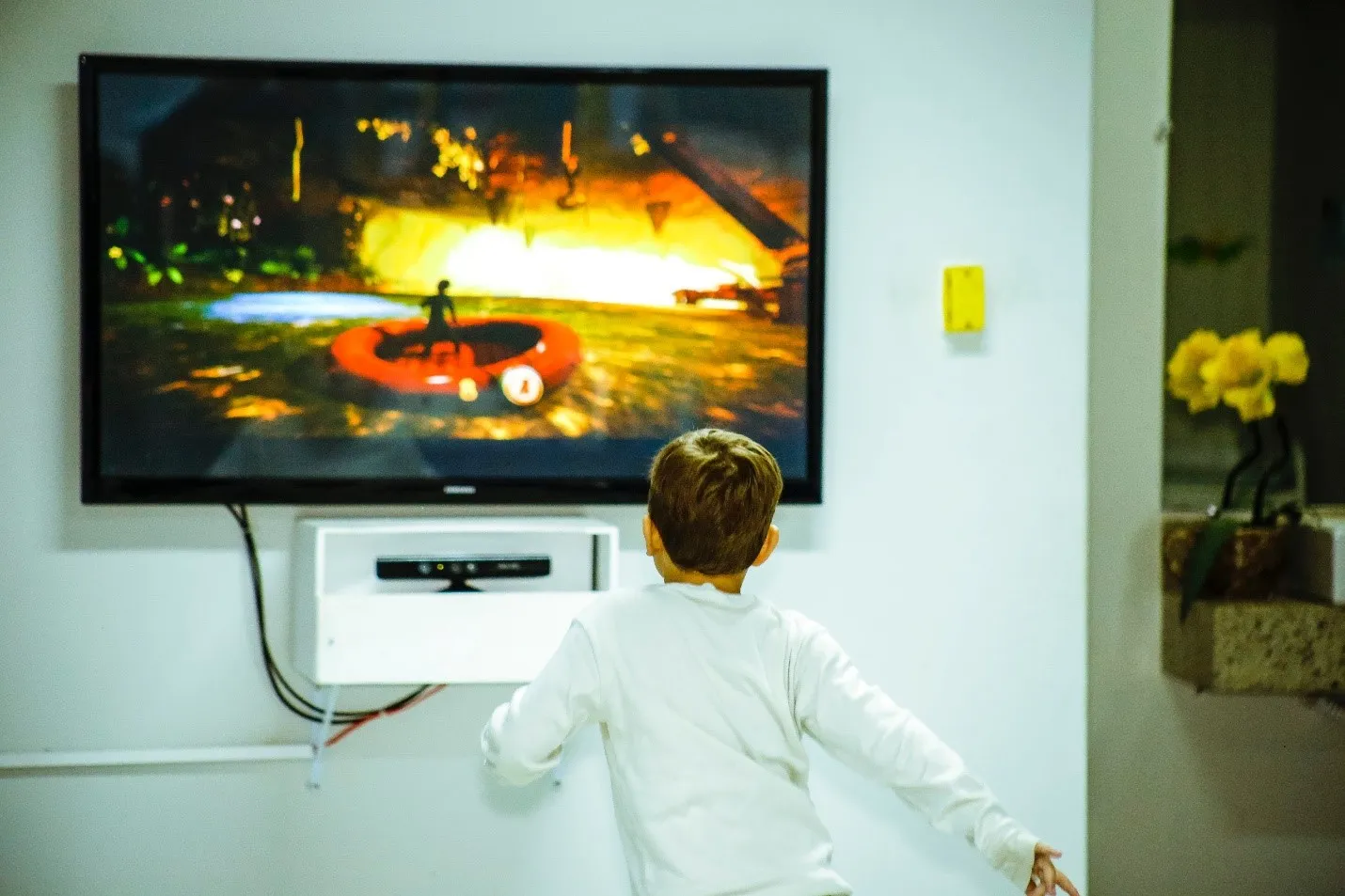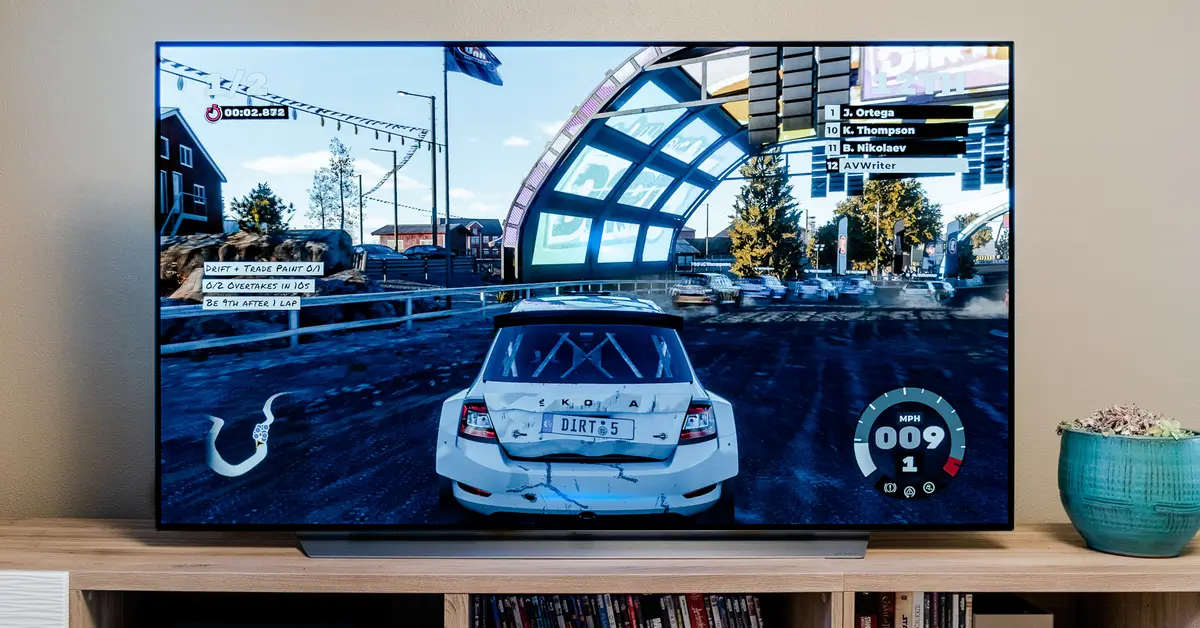Home>Technology>Home Entertainment Systems>What Is The Effect Of Television And Screens On Family Reading Habits


Home Entertainment Systems
What Is The Effect Of Television And Screens On Family Reading Habits
Published: December 21, 2023
Discover the impact of home entertainment systems, such as television and screens, on family reading habits and find ways to strike a balance between technology and reading time.
(Many of the links in this article redirect to a specific reviewed product. Your purchase of these products through affiliate links helps to generate commission for Storables.com, at no extra cost. Learn more)
Introduction
Welcome to the age of technology and entertainment, where televisions and screens have become an integral part of our daily lives. From streaming services and gaming consoles to smartphones and tablets, these devices offer us endless sources of entertainment and information at our fingertips. While they provide convenience and enjoyment, there is growing concern about the impact of television and screens on family reading habits.
Reading has long been recognized as a valuable activity that stimulates imagination, expands knowledge, and fosters critical thinking. However, with the rise of television and screens, there has been a noticeable shift in how families spend their leisure time. Instead of picking up a book, many individuals, especially children and teenagers, are opting to watch TV shows, play video games, or scroll through social media feeds.
This shift in leisure activities has raised questions about the overall decline in family reading habits and its potential consequences. In this article, we will explore the effect of television and screens on family reading habits, the factors influencing these habits, and strategies for promoting reading in the age of technology.
Key Takeaways:
- Television and screens have significantly impacted family reading habits, leading to decreased reading time, content preferences, and comprehension skills. However, strategic efforts can promote a healthy balance between screen time and reading, fostering a love for books within families.
- By implementing creative strategies such as leading by example, creating a reading-friendly environment, and utilizing technology wisely, families can cultivate strong reading habits amidst the digital age. The goal is to strike a balance and prioritize the enriching experience of reading as a family.
Read more: Why Is Television Advertising Effective
Impact of Television on Family Reading Habits
Television has been a prominent source of entertainment for decades, captivating audiences with its visual storytelling and engaging narratives. While it offers an immersive experience, the rise of television has had a notable impact on family reading habits.
One of the most significant effects of television on family reading habits is the decrease in time spent reading. With the availability of endless TV shows and channels, individuals, especially children, often prioritize watching television over engaging in reading activities. The captivating nature of television programs, combined with the convenience of passive viewing, has made it a preferred choice for family entertainment.
Furthermore, television has also influenced the content preferences of individuals, particularly children. The colorful and dynamic visuals presented on screen often overshadow the immersive experience provided by books. As a result, children may develop a preference for screen-based entertainment, which can hinder their inclination towards reading.
Another impact of television on family reading habits is the decrease in reading comprehension and vocabulary development. While television programs may offer educational content, they rarely provide the same level of complex language and cognitive stimulation as books. Reading actively engages the brain, requiring individuals to decode words, analyze context, and visualize scenes, all of which contribute to language development and critical thinking skills.
Moreover, the influence of television extends beyond the act of watching itself. The advertising and marketing tactics employed by television networks often promote consumerism and instant gratification. This can lead to a culture of materialism, where the value of intellectual pursuits, such as reading, is overshadowed by a desire for material possessions.
Despite the potential negative impact, it is important to note that television can also have positive effects on reading habits. Educational programs, documentaries, and book adaptations can pique interest in certain topics and serve as a gateway to further exploration through reading. Additionally, shared family viewing experiences can foster discussions and spark curiosity, creating opportunities for parents to introduce books and reading materials related to the content viewed on screen.
In light of these effects, it is essential for families to strike a balance between television viewing and reading. By consciously prioritizing reading time and incorporating regular reading activities into the daily routine, families can mitigate the potential negative impact of television on reading habits.
Impact of Screens on Family Reading Habits
Screens, including smartphones, tablets, and computers, have become an integral part of our lives, providing instant access to information and entertainment. While screens offer numerous benefits, they have also had a noticeable impact on family reading habits.
One of the most significant effects of screens on family reading habits is the competition for time and attention. With the proliferation of screens in our daily lives, individuals, especially children and teenagers, may find themselves absorbed in screen-based activities, such as social media, gaming, or streaming videos. This constant engagement with screens can reduce the time dedicated to reading, leading to a decline in family reading habits.
Screens also pose a unique challenge to reading due to their interactive and multimedia nature. While screens provide a wealth of information and entertainment, their constant influx of notifications, advertisements, and visual stimuli can disrupt concentration and hinder the reading experience. The allure of screens can make it difficult for individuals, especially young readers, to fully engage in the immersive and uninterrupted nature of reading a book.
In addition, screens have influenced the way we consume information, often promoting short-form content and quick gratification. Social media platforms, for example, are designed to deliver bite-sized snippets of information, ultimately shaping our attention spans and diminishing the desire for sustained reading. This shift in information consumption habits can impact individuals’ reading habits, discouraging them from diving into lengthy books and instead opting for easily digestible content.
Furthermore, screens have also affected the overall reading environment within a household. The presence of screens can create distractions and temptations that make it challenging to establish a quiet and calm atmosphere conducive to reading. For instance, the allure of screen time may compete with the allure of picking up a book, leading individuals to choose screens over reading materials.
Despite these challenges, screens also offer potential opportunities to encourage reading. E-books and reading apps, available on smartphones and tablets, can provide individuals with easily accessible and portable reading materials. Additionally, digital platforms offer interactive features, such as highlighting, dictionary look-up, and annotations, that can enhance the reading experience and facilitate comprehension.
Ultimately, it is important for families to be mindful of the impact of screens on reading habits and to establish boundaries and routines that promote a healthy balance between screen time and reading. Encouraging designated reading times, creating technology-free zones, and leading by example can help cultivate a positive reading environment and foster a love for books amidst the digital age.
Limit screen time for children and make reading a family activity. Set aside specific times for reading together and create a cozy reading nook in your home. Model good reading habits by reading in front of your children.
Factors Influencing Family Reading Habits
Family reading habits are shaped by a variety of factors, including individual preferences, parental influence, access to reading materials, and the overall reading culture within a household. Understanding these factors can help identify opportunities to promote reading and develop a lifelong love for books.
One of the key factors influencing family reading habits is parental involvement and role modeling. Parents who prioritize reading and demonstrate enthusiasm for books create a positive reading environment within the family. When children see their parents enjoying reading and engaging in literary activities, they are more likely to develop an interest in reading and make it a regular habit.
Access to reading materials is another crucial factor influencing family reading habits. Availability of a diverse range of reading materials, including books, magazines, newspapers, and digital resources, increases the likelihood of engaging in reading. A home that is filled with reading materials, both age-appropriate and challenging, encourages exploration and fosters a reading culture within the family.
Peer influence also plays a role in shaping family reading habits, particularly among children and teenagers. Friends and classmates who engage in reading and discuss books can encourage others to join in and become part of a reading community. Book clubs or reading groups within schools or communities can provide opportunities for children and parents to connect with others who share their reading interests.
The educational environment, including school curriculum and classroom practices, can significantly impact family reading habits. When schools prioritize reading and create a supportive environment that promotes a love for books, children are more likely to develop strong reading habits. Collaborative reading activities, library visits, and reading challenges can further enhance the reading culture within the school and extend to the family setting.
Technology and screens also influence family reading habits. As discussed earlier, the prevalence of screens can pose challenges to reading habits. However, technology can also be harnessed as a tool to promote reading. E-readers, audiobooks, and reading apps offer convenient and engaging ways to access reading materials, particularly for individuals who are comfortable with digital platforms.
Finally, socio-economic factors can impact family reading habits. Families with limited financial resources may struggle to provide a wide range of reading materials or access to libraries and bookstores. Additionally, time constraints due to work or other responsibilities can affect the availability of dedicated reading time within the family. Recognizing these challenges and seeking alternative resources, such as community libraries or online reading platforms, can help mitigate the impact of socio-economic factors on reading habits.
By understanding these influencing factors, families can make conscious efforts to create an environment that nurtures a love for reading. Encouraging parental involvement, providing access to diverse reading materials, fostering a reading culture, and leveraging technology can all contribute to building strong family reading habits.
Strategies for Promoting Family Reading Habits in the Age of Television and Screens
In a world dominated by television and screens, promoting family reading habits requires intentional effort and creative strategies. Here are some effective approaches to encourage reading amidst the abundance of digital distractions:
- Lead by example: Parents play a vital role in shaping their children’s reading habits. Make reading a visible and enjoyable part of your own daily routine. Set aside dedicated reading time and let your children see you immersed in a book. Your enthusiasm for reading will inspire them to follow suit.
- Create a reading-friendly environment: Designate a cozy and comfortable reading nook in your home where family members can retreat to read. Stock the area with a variety of books, magazines, and reading materials that cater to different interests and reading levels. Make it a welcoming space that invites everyone to indulge in the joy of reading.
- Promote family reading activities: Set aside specific times for family reading activities. This can include reading aloud together, where each family member takes turns reading a chapter or a page. Discuss the book’s themes, characters, and plot, encouraging meaningful conversations and shared experiences related to reading.
- Integrate reading into daily routines: Incorporate reading into daily activities. Encourage reading during meal times, while waiting for appointments, or before bedtime. Make it a habit to always have a book or reading material handy, rather than turning to screens for instant entertainment.
- Explore diverse reading materials: Encourage family members to explore different genres, topics, and formats. Provide a wide range of reading materials that cater to everyone’s interests, including fiction, non-fiction, graphic novels, poetry, and magazines. This variety will help spark curiosity and make reading more appealing to individuals with different preferences.
- Utilize technology wisely: While screens can be a distraction, they can also be utilized to promote reading. E-readers, audiobooks, and reading apps can offer convenient and accessible ways to engage with reading materials. Set boundaries and screen time limits to ensure a healthy balance between screen-based reading and traditional book reading.
- Create reading challenges and rewards: Make reading a fun and exciting endeavor by creating reading challenges and reward systems. Set goals together as a family and celebrate achievements. This can be in the form of reading a certain number of books, completing a reading series, or exploring a new genre.
- Engage in community reading programs: Participate in local library reading programs or community book clubs. These initiatives provide opportunities for family members to connect with others who share their reading interests, fostering a sense of belonging and enthusiasm for reading.
- Encourage independent reading: Foster a love for independent reading by providing ample opportunities for solo reading time. Allow family members to choose their own books and encourage them to share their thoughts and recommendations with others.
- Celebrate and showcase reading accomplishments: Celebrate reading accomplishments by acknowledging and showcasing family members’ achievements. Create a reading wall or bookshelf to display favorite books or book reviews written by each family member. This will create a sense of pride and motivate everyone to continue their reading journey.
By implementing these strategies, families can create a positive reading culture that thrives even in the age of television and screens. Remember, the goal is not to completely eliminate screen time, but rather to find a balance and prioritize the enriching experience of reading as a family.
Read more: How To Clean Lcd Television Screens
Conclusion
In today’s digital age, the impact of television and screens on family reading habits cannot be ignored. While these technological advancements offer convenience and entertainment, they have also posed challenges to the promotion of reading within families. However, with strategic approaches and conscious efforts, it is possible to foster a love for reading and maintain strong family reading habits.
Understanding the effects of television and screens on reading habits is the first step towards finding a balance. Television has influenced the decrease in reading time, content preferences, and reading comprehension skills. Screens, on the other hand, have introduced distractions and shorter attention spans.
Factors such as parental involvement, access to reading materials, peer influence, educational environment, and socio-economic factors also play a role in shaping family reading habits. By addressing these factors and implementing effective strategies, families can promote a reading-friendly environment and inspire a lifelong love for books.
Strategies like leading by example, creating a reading-friendly environment, promoting family reading activities, integrating reading into daily routines, exploring diverse reading materials, utilizing technology wisely, engaging in community reading programs, and celebrating reading accomplishments can all contribute to the cultivation of strong family reading habits.
It is crucial to remember that the goal is not to completely eliminate television or screens from our lives, but rather to strike a balance between screen time and reading. The power of technology can be harnessed to access reading materials and enhance the reading experience, while still valuing the joys and benefits of traditional book reading.
By prioritizing reading and making it a shared family activity, we can ensure that the love for books continues to flourish in the digital age. Let us create a reading culture within our families that nurtures imagination, expands knowledge, and fosters critical thinking. Together, we can inspire the next generation to discover the magic of books and embrace the lifelong pleasure of reading.
Frequently Asked Questions about What Is The Effect Of Television And Screens On Family Reading Habits
Was this page helpful?
At Storables.com, we guarantee accurate and reliable information. Our content, validated by Expert Board Contributors, is crafted following stringent Editorial Policies. We're committed to providing you with well-researched, expert-backed insights for all your informational needs.















0 thoughts on “What Is The Effect Of Television And Screens On Family Reading Habits”